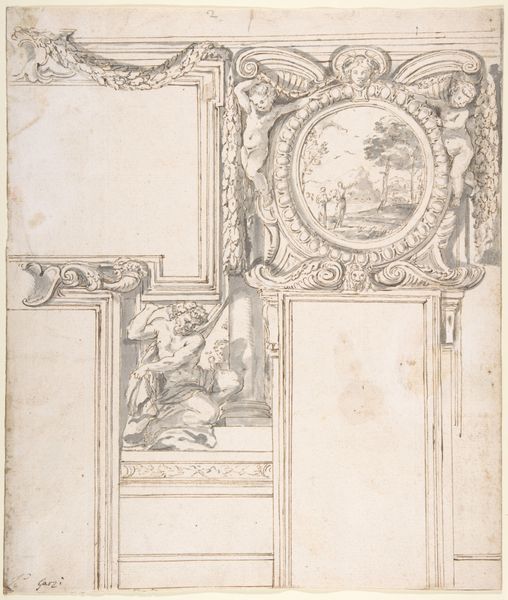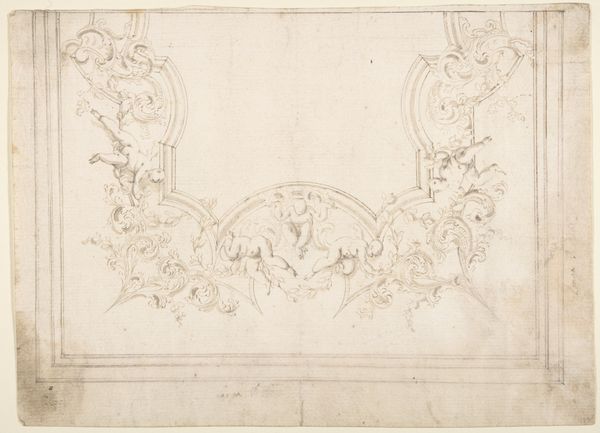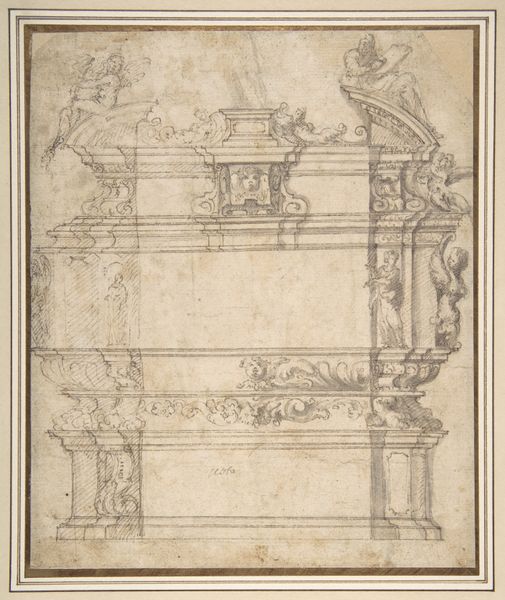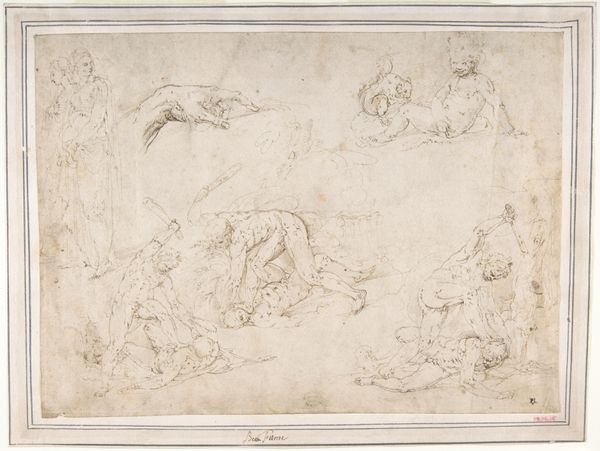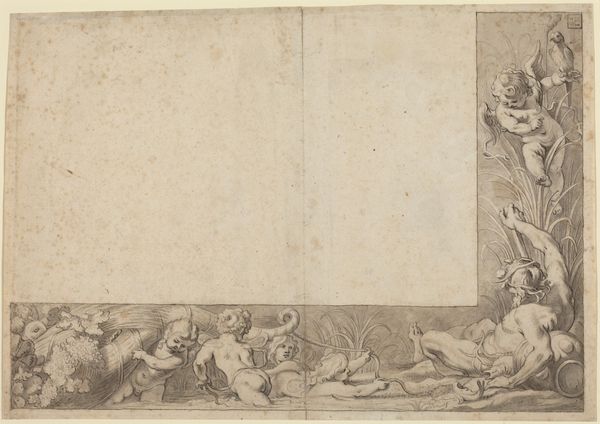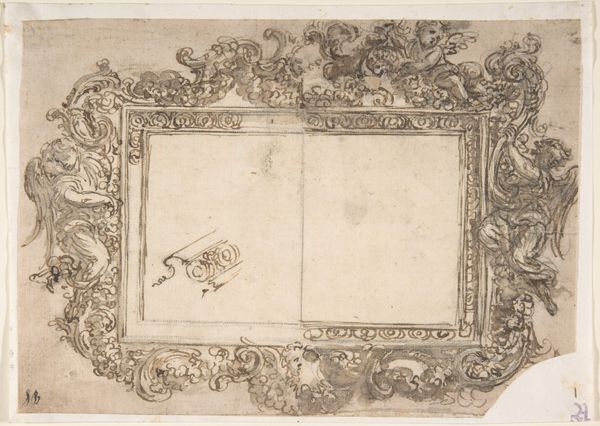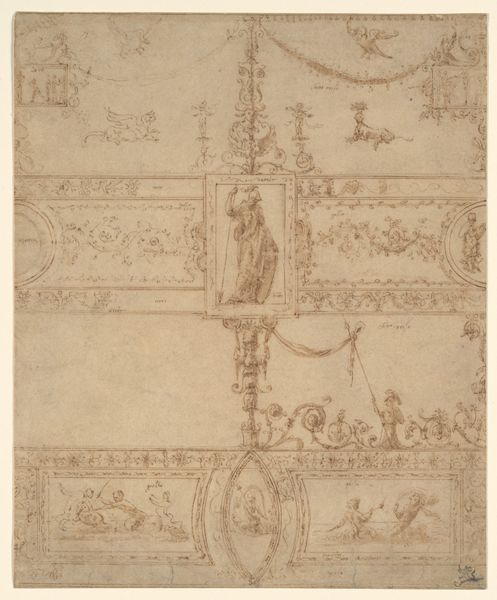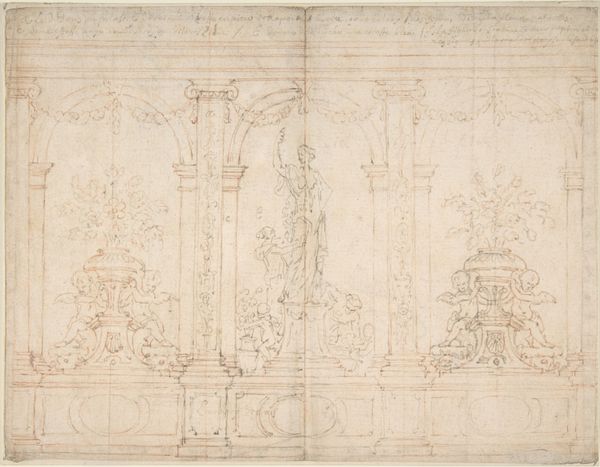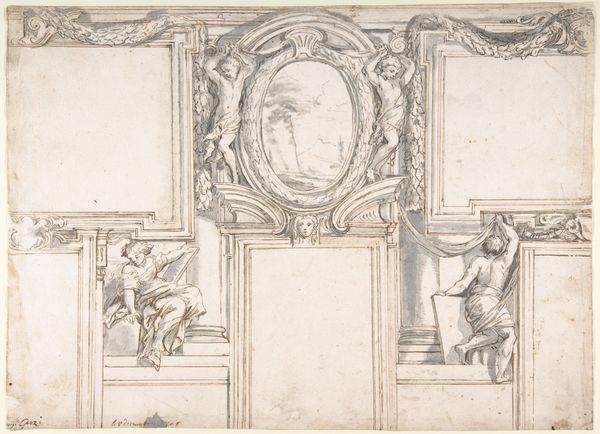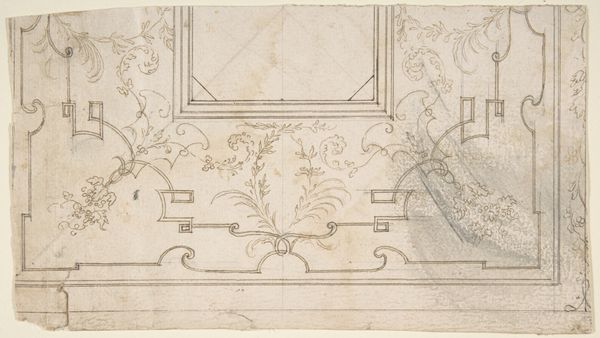
One Half of a Design for a Frame of a Stage Proscenium, with a Figure of Justice at the Right, and the Barberini Arms in a Cartouche at the Top 1700 - 1800
0:00
0:00
drawing, paper, pencil
#
drawing
#
allegory
#
baroque
#
classical-realism
#
charcoal drawing
#
paper
#
pencil
#
history-painting
Dimensions: 10-1/16 x 14 in. (25.6 x 35.6 cm)
Copyright: Public Domain
Editor: We’re looking at “One Half of a Design for a Frame of a Stage Proscenium” by Giovanni Francesco Romanelli, likely from the 1700s. It's a pencil and charcoal drawing on paper, residing at the Met. It feels unfinished, almost ghostly, but incredibly detailed in its ornamentation. What stories do you see in its lines? Curator: It’s a fascinating piece. I'm immediately drawn to the figure of Justice. Look how she's positioned – a lone woman with the tools of governance within what’s intended as a theatrical space. This speaks volumes about the performative aspects of justice, doesn't it? The very idea of staging, and therefore controlling, the narrative of law and order for a particular audience, under the powerful Barberini family, raises critical questions. What did Justice mean for them? And, importantly, *for whom* was Justice being performed? Editor: That makes me think about power. The Barberini arms are so prominently displayed, linking the concept of Justice directly to their family’s image. Is this design suggesting that their power is divinely ordained? Curator: Precisely! We have to dissect this. Justice, in this context, becomes a visual tool legitimizing their authority. Think about the audiences who would be gazing upon this proscenium arch – members of court, foreign dignitaries. The intended message is clear: the Barberini family *are* justice, they embody it. What power dynamics do you think were at play during the period this design was created? Editor: The Baroque period was all about dramatic displays of power. This drawing suggests an intention to use art as propaganda, shaping public opinion and reinforcing existing hierarchies. Curator: Exactly! And we can ask, what resistance, what counter-narratives might have existed? Where are the voices of the marginalized in this seemingly straightforward image of Justice? Whose stories were omitted to center the Barberini family and their view of “Justice”? Editor: I hadn't considered it in such a politically charged light before. It’s so much more than just a pretty drawing. Curator: Art is never neutral. This design reveals how even seemingly decorative elements can be potent tools of social and political messaging, meant to uphold specific power structures. Thinking about that can influence how we consider art today. Editor: I’ll definitely look at these Baroque designs with new eyes now, always considering the underlying message. Thanks for your insight.
Comments
No comments
Be the first to comment and join the conversation on the ultimate creative platform.
